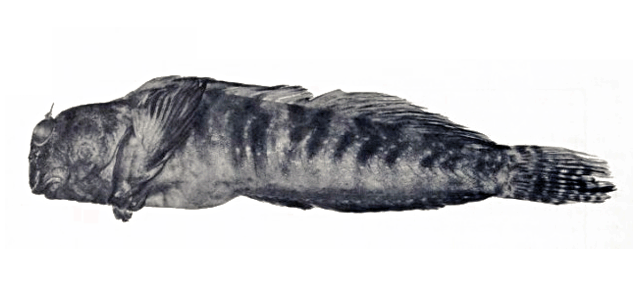| Blenniidae (Combtooth blennies), subfamily: Salariinae |
| 6.79 cm SL (male/unsexed) |
|
demersal; marine; depth range 0 - 5 m |
| Western Indian Ocean: Madagascar, Mauritius, and Reunion. |
|
Dorsal spines (total): 13-14; Dorsal soft rays (total): 14-17; Anal spines: 2-2; Anal soft rays: 16-17. Ventral margin of upper lip crenulate on lateral thirds; entire on central third; nape cirri present, simple; orbital cirri branched; 1 to 5, usually 3 to 5, preopercular pore positions with pairs or multiples of pores; subquadrate dark blotch present in humeral area on body; upper lip frequently with up to 15 alternating dark and 15 pale bands of subequal width, up to 7 of each above central, ventrally entire portion of lip; prominent, irregular dark mark on head just posterior to midpostorbital sensory pores. |
| Oviparous. Eggs are demersal and adhesive (Ref. 205), and are attached to the substrate via a filamentous, adhesive pad or pedestal (Ref. 94114). Larvae are planktonic, often found in shallow, coastal waters (Ref. 94114). |
|
Least Concern (LC); Date assessed: 27 March 2009 Ref. (130435)
|
| harmless |
Source and more info: www.fishbase.org. For personal, classroom, and other internal use only. Not for publication.

